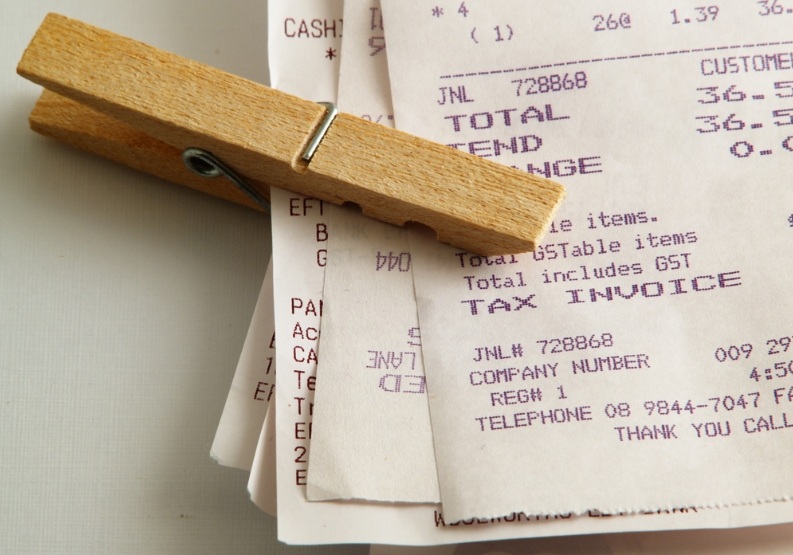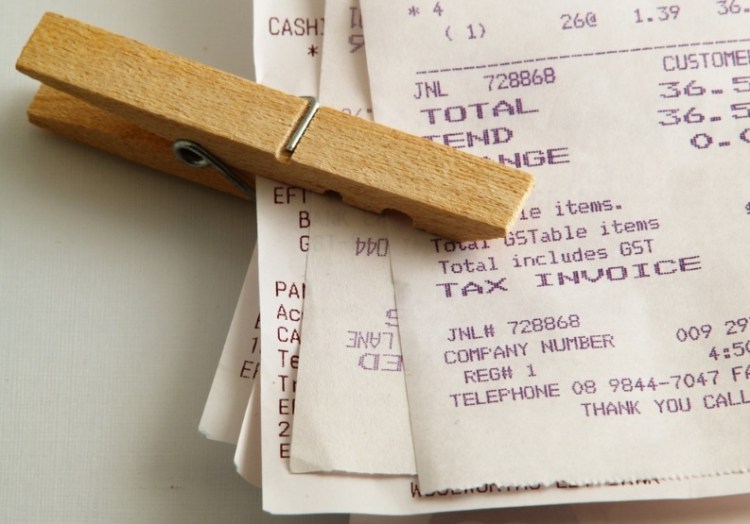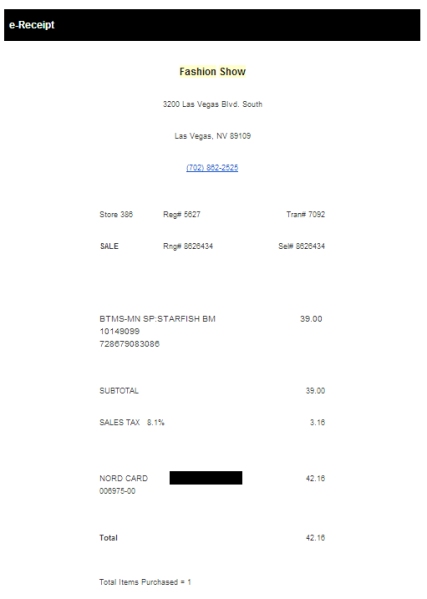 This is the third in my series looking at offline retail. Earlier, I looked at how to reinvent big box electronics and department stores.
This is the third in my series looking at offline retail. Earlier, I looked at how to reinvent big box electronics and department stores.
The humble receipt doesn’t get much thought. It’s usually a little slip that you get at the end of a transaction. It’s printed on flimsy paper. Leave it out in the sun and most of the text will disappear quickly. It gets crumpled. It gets lost. It also wastes paper to transmit data that could be sent electronically. It’s increasingly an annoyance for those who’ve become accustomed to online shopping.
Fortunately, there’s good news: More and more retailers are offering to email your receipt to you. There’s also bad news: They aren’t doing a great job of it.
Here’s an e-receipt from Nordstrom:
For starters, it took more than 20 minutes from the time I completed the transaction until the receipt arrived in my mailbox. It should arrive instantly. Otherwise, many people will ask for a paper copy just in case.
The item I bought is described as “BTMS-MN SP:STARFISH BM 10149099 728679083086″. Good luck figuring out what that is without Googling it. Knowing what I actually bought, I could translate that as Bottoms-Men. I don’t know what SP is. Starfish is the description. If I were searching my email for the Boss swim trunks I bought, the text in the email would be no help.
Nordstrom is applying the constraints of an old medium to new technology. They are taking the output that would go to the printer and redirecting it to email.
That’s the wrong approach. Descriptions on print receipts are optimized to save paper. There’s an opportunity to do much better.
The transaction data should be translated to take advantage of the infinite space, searchability and interactivity of email.
The email should have:
- Pictures of each item, if available.
- A human readable description. “BOSS Black Starfish Swim Trunks”
- A link to leave a rating of my swim trunks.
- Cross sells for related items. If you liked these trunks, you might like these flip flops.
(Receipts from Nordstrom.com have the human readable description, but not the other items.)
This would improve the experience for the consumer, potentially improve the experience for other customers (through more ratings data), and improve cross sells.
Stores should remember my receipt preferences so I don’t have to provide my email address or even ask each time. Macy’s already does this. When you swipe your credit card, you can say you want paper receipts, email receipts, or both. The next time you swipe the same card, the POS system looks up your preference and acts accordingly.
Ideally, stores would create a seamless offline-online experience. It shouldn’t matter if I bought in store or online. I should be able to pull up my purchase history in my online account.
Rocky Agrawal is an analyst focused on the intersection of local, social and mobile. He is a principal analyst at reDesign mobile. Previously, he launched local and mobile products for Microsoft and AOL. He blogs at http://blog.agrawals.org; and tweets at @rakeshlobster.
[Top image credit: Arno Staub/Shutterstock]



